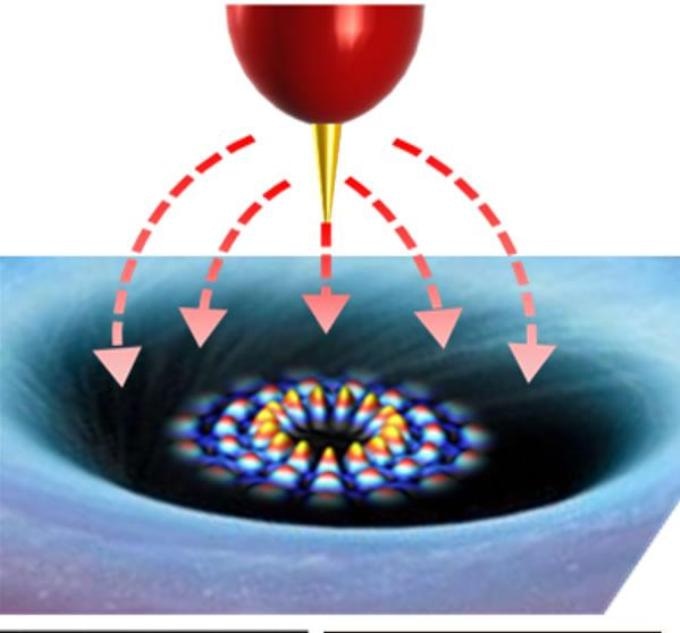Oct 23 2017
Graphene, a one-atom-thick layer of the stuff in pencils, is considered a better conductor than copper and is extremely promising for electronic devices however there is one catch: Electrons that pass through it cannot be stopped.
 A sharp tip creates a force field that can trap electrons in graphene or modify their trajectories, similar to the effect a lens has on light rays. Credit: Yuhang Jiang/Rutgers University-New Brunswick
A sharp tip creates a force field that can trap electrons in graphene or modify their trajectories, similar to the effect a lens has on light rays. Credit: Yuhang Jiang/Rutgers University-New Brunswick
Until now, that is. Researchers at Rutgers University-New Brunswick have discovered how to tame the uncontrollable electrons in graphene, creating a way for extremely fast transport of electrons with low loss of energy in innovative systems. Their study findings were published online in Nature Nanotechnology.
This shows we can electrically control the electrons in graphene, in the past, we couldn’t do it. This is the reason people thought that one could not make devices like transistors that require switching with graphene, because their electrons run wild.
Eva Y. Andrei, Board of Governors professor in Rutgers’ Department of Physics and Astronomy in the School of Arts and Sciences and the study’s senior author.
Andrei stated that now it may be possible to accomplish a graphene nano-scale transistor. So far, graphene electronics components include ultra-low resistivity wires, supercapacitors, and ultra-fast amplifiers. The addition of a graphene transistor could be a significant step towards an all-graphene electronics platform. Various other graphene-based applications including an ultra-sensitive biological and chemical sensors, and filters for water purification and desalination. Graphene is also being developed for use in printable and paintable electronic circuits, and flat flexible screens.
Graphene is a nano-thin layer of the carbon-based graphite that pencils write with. This is stronger than a great conductor or steel. However, when electrons pass through it, they move in straight lines and their high velocity does not get changed. “If they hit a barrier, they can’t turn back, so they have to go through it,” Andrei said. “People have been looking at how to control or tame these electrons.”
By sending the voltage through a high-tech microscope with a very sharp tip, also the size of one atom, Andrei’s team managed to tame these wild electrons. The team created an optical system by sending voltage via a scanning tunneling microscope, which provides 3D views of surfaces at the atomic scale. The sharp tip in the microscope creates a force field that can trap electrons in graphene or alters their trajectories, like the effect a lens has on light rays. According to Andrei, electrons can be easily trapped and released, offering an efficient on-off switching mechanism.
“You can trap electrons without making holes in the graphene,” she said. “If you change the voltage, you can release the electrons. So you can catch them and let them go at will.”
Andrei stated that the next stage would be to scale this up by putting very thin wires, called nanowires, on top of graphene as well as controlling the electrons with voltages.
The co-lead authors of the study are a graduate student at Universiteit Antwerpen in Belgium, and Jinhai Mao and Yuhang Jiang, postdoctoral fellows at Rutgers. The other co-author from Rutgers is Guohong Li, a research associate.